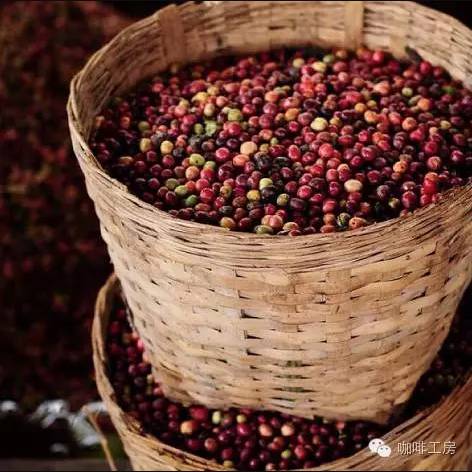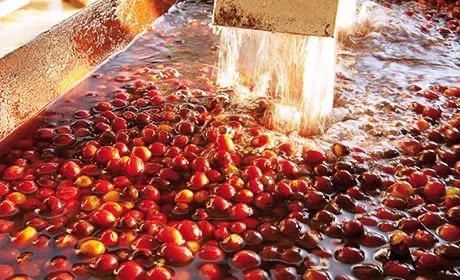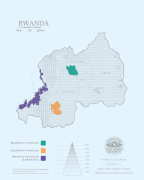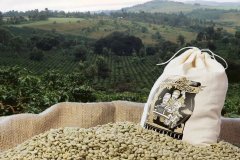African High altitude Coffee Zambian Coffee Flavor and three usual processing methods
Zambian coffee was grown in the 1950s to get rid of overnight copper ponies and diversify exports. Not surprisingly, the focus is on output and production efficiency. The plantation is large and tidy, planted in sunny conditions on flat ground and processed in large wet mills as much as possible.
Zambian coffee is fruity, rich in citrus fruits, with berry and melon flavors.
The northern province, which is relatively close to the equator and rich in altitude, is the best area for growing Arabica coffee in Zambia (Mafenga Mountain is the highest point in Zambia at 2300 meters above sea level).

Most of the best coffee in Zambia comes from a single estate. The Kateshi and Isanya cafes are located 1300 and 1650 miles respectively in the northern province of Zambia. These estates cover a total area of 2438 hectares, of which 1277 hectares grow coffee and 1161 hectares are dedicated protected areas and buffer zones. Both estates have Tropical Rainforest Alliance, Utz and 4C certification.
These properties are also involved in some social activities.
There are many varieties of coffee in Zambia, including Catimor 129, Castillo, Java and so on.
Coffee professional grades are AAA, AA, AB and Peaberry.

There are roughly three methods for processing Zambian coffee: one is washing, one is traditional natural method, and the other is honey treatment.
Washing picking is selective and 100% done by hand when cherries are at their peak of ripening. The picked cherries are picked manually to remove any cracks or defects and then made into pulp within 5 hours after harvest. After the coffee is fermented, the remaining fruity mucus is decomposed, then washed in a clean grading channel, and then dried in the sun until the optimal water content is reached (about 12%).
Natural methods. This kind of coffee is processed naturally on a raised African bed. Cherries are selectively picked before picking to ensure only the most mature and highest quality processing. According to environmental conditions, selected cherries are dried in bed in Africa for 18-24 days. The shading net is used to disperse sunlight and ensure a uniform drying process. Once the optimal water content is reached, coffee rests in a cool environment before being milled and is graded and sorted according to bean size to eliminate any residual defects.
Honey treatment.
Harvesting is selective and manual. Picked cherries are picked manually before pulping to remove any cracks. Coffee processed with honey is pre-washed with a special beater to avoid cross-contamination in other batches. After pulping, the coffee-which still retains its sugary mucus-is immediately transferred to a specially raised African bed with a fine net that facilitates mucus retention and maximum airflow. Sunshade nets are used to protect against sun damage at the hottest time of the day. Coffee is carefully raked throughout the day to prevent caking and overfermentation and to ensure a continuous drying process. Candied parchment is dried for 9-14 days according to environmental conditions, and then transported to a dry mill for secondary processing.
Important Notice :
前街咖啡 FrontStreet Coffee has moved to new addredd:
FrontStreet Coffee Address: 315,Donghua East Road,GuangZhou
Tel:020 38364473
- Prev

High altitude coffee the different and complex Rwandan coffee style in the coffee industry and producing areas with Rwandan characteristics.
Despite the challenges in coffee sales and production, coffee remains one of the most important official sources of foreign exchange in Rwanda. Since Rwandan goods have to pass through other countries through difficult land routes to reach ports, Rwanda does not have a natural advantage in many forms of exports. The fact that the coffee industry still exists under many adverse conditions is a strong testament to its potential. this
- Next

Coffee flavor and main processing methods of East African coffee in Tanzania
Tanzania coffee production region: most of the famous Tanzanian peach berry coffee, like most Tanzanian Arabica coffee, grows on Mount Meru and Kilimanjaro. Most of the Arabica coffee in Tanzania is produced in the Kilimanjaro region and the southern highlands. Some of the best coffee in Tanzania are Tanzania peach coffee and Tanzania Kilima
Related
- Beginners will see the "Coffee pull flower" guide!
- What is the difference between ice blog purified milk and ordinary milk coffee?
- Why is the Philippines the largest producer of crops in Liberia?
- For coffee extraction, should the fine powder be retained?
- How does extracted espresso fill pressed powder? How much strength does it take to press the powder?
- How to make jasmine cold extract coffee? Is the jasmine + latte good?
- Will this little toy really make the coffee taste better? How does Lily Drip affect coffee extraction?
- Will the action of slapping the filter cup also affect coffee extraction?
- What's the difference between powder-to-water ratio and powder-to-liquid ratio?
- What is the Ethiopian local species? What does it have to do with Heirloom native species?

